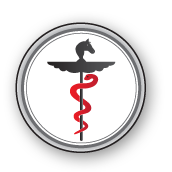News
Stem Cells
What Are Cord Stem Cells?
Stem cells are a population of cells that can be recovered from a rapidly growing list of tissues that most commonly include the embryo, fetal tissue, umbilical cord, bone marrow, adipose tissue, and placenta. These cells have the potential to self-renew and differentiate into various cell types (potency). The ability to differentiate into cells of all types (totipotency) is reserved only to embryonic stem cells. The ability to differentiate into other cell types is lost as the cell becomes more specialized. Researchers have found a non-controversial source of multipotent stem cells in post-natal stem cells. The field of Regenerative Medicine has exploded in recent years with novel uses of these cells in the form of stem cell therapy. LifeLine Labs brings this cutting-edge technology to the equine industry.
LifeLine Labs isolates multipotent mesenchymal stem cells from an equine umbilical cord. The umbilical cord can be divided into two basic parts – vessels and matrix. Blood cells, including lymphocytes, erythrocytes and platelets, flow within the vessels of the umbilical cord. Cord blood stem cells flow through the vessels as well. These master stem cells have the ability to regenerate and differentiate into various cells types. These cells are extremely useful for treating diseases of hematopoietic origin, namely leukemia. Cord blood banking firms list up to 70 diseases that can be treated with stem cells derived from cord blood.
The matrix is made of a gelatinous substance otherwise known as Wharton’s Jelly. This primitive substance is rich in hyaluronic acid and another type of stem cell – mesenchymal stem cells. While only 1 out of 200 million cord blood cells is a stem cell, 1 in every 300 cells from Wharton’s Jelly is a stem cell. Mesenchymal stem cells are also able to self-renew, but these cells have the ability to differentiate into cell types suitable for repair of tendon, bone, and cartilage. Stem cell therapy holds tremendous promise for the repair and regeneration of musculoskeletal tissues using mesenchymal stem cells.


